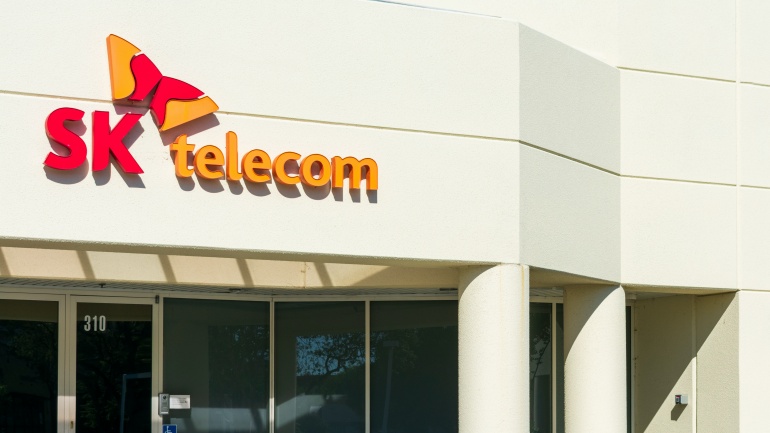Google and Intel team up on 5G and edge network solutions Google Cloud has announced that it is working with Intel to establish reference architectures and integrated solutions for communications providers to help them deploy 5G and edge network solutions. To achieve the cloud native 5G goals, the partnership encompasses a full suite of telecommunications, along with application providers, carriers and communications service providers, hardware vendors and global telecommunications networks, with the goal of the cost and time to market required by the telecommunications industry. Intel is already the most powerful participant in the data center hardware market, but is keen to repeat that success with edge infrastructure. Read more at: https://tinyurl.com/34fv5aps Deutsche Telekom tests solar panels to power mobile sites Deutsche Telekom (DT) has announced that in the second half of 2020, the company was testing the use of solar panels to power its mobile infrastructure. In a new…
FCC establishes Emergency Broadband Benefit program The FCC has recently held an open meeting in order to discuss its next priorities. One of the most important matters discussed was the new Emergency Broadband Benefit program, which Congress has instructed the FCC to initiate. As part of the Consolidated Appropriations Act, Congress has allocated $3.2 billion for the program. Broadband providers participating in the program will be able to offer discounts of up to $50 per month for Internet services and up to $75 per month for those services on tribal lands. Currently, it is unclear how long these broadband benefits will last. Read more at: https://tinyurl.com/jj52hlfl Sinch acquires Inteliquent Sinch AB, a Sweden-based company primarily engaged in the provision of cloud computing services, has signed a final agreement to acquire Inteliquent, the largest independent voice communications provider in the US, for an all-cash offer of $1.140 billion. The deal expands…
SK Telecom, the top mobile operator in South Korea, has teamed up with its security subsidiary ADT Caps Co. and local video management solutions company Innodep Inc. to develop an artificial intelligence (AI) solution to meet the growing demand for efficient and advanced video analysis services. Under the agreement, the trio will develop services to effectively manage video surveillance systems in the private and public sectors of the growing local market. The ultimate goal of the partnership is to create real-time security services for the public and industry, while addressing existing defects in the video analysis systems, such as false alarms. As the deployment of CCTV in the public and private sectors is expanding rather swiftly to enhance safety and security, SKT said the solution will increase cost-effectiveness and accuracy by optimizing its AI chip and algorithms. This solution will be linked to Innodep’s intelligent management platform and…
Google Cloud has announced a new 10-year strategic partnership with the Canadian telecommunications company Telus. The two companies plan to work together on developing new services and products for several key industries, including healthcare, agriculture, security and connected homes. Through this partnership, Telus will accelerate the adoption of its public cloud on the Google Cloud enterprise platform to ensure greater interoperability across its IT backbone and network infrastructure. Google Cloud will also become one of Telus’ partners in providing 5G services and Multi-Access Edge Computing (MEC), which uses the Google Cloud-powered application platform Anthos. Telus and Google Cloud will prioritize collaboration to improve their Canadian customers’ social, economic, environmental and health performance, and at the same time, work to reduce their carbon footprint. Telus will also use Google Cloud Contact Center AI to improve customer interaction and reduce costs. One of the main areas of focus of…
Vodafone and Nokia test 100G PON tech Nokia’s new technology has been tested for the first time by Vodafone in Germany. The prototype used a single 25G laser and DSP technology developed at Nokia Bell Labs to create the single wavelength 100G PON transmission. Gavin Young, Head of Vodafone’s Fixed Access Center of Excellence, said the 100G PON is 40 times the capacity of today’s GPON networks and 10 times the capacity of the XGS-GPON. The 100G PON enables flexible tariffs and operates by grouping modems using a methodology similar to that already used in cable networks, suggesting that this cable network experience can help to better evaluate and take advantage of the new PON technology. Read more: https://tinyurl.com/xpai96uz Spectrum Enterprise leverages Cisco Meraki’s cloud platform Spectrum Enterprise is leveraging a new managed network solution based on Cisco’s Meraki cloud platform. Spectrum Enterprise’s Managed Network Edge (MNE) was designed to…
Nokia and China Mobile trial 5G RAN AI Nokia and China Mobile have announced that they have successfully tested Nokia’s RAN Intelligent Controller (RIC) over China Mobile’s 5G network. As alluded to in the name of the Nokia product, the focus is less on RAN itself, but more on its automated control, thereby eliminating expensive human labor from the process. Pasi Toivanen, Head of Nokia’s Edge Cloud Platform, said: “We are excited to have worked with China Mobile on this project to advance RAN network intelligence.” Read more at: https://tinyurl.com/yxu3komy Deutsche Telecom’s Access 4.0 FTTH is live Deutsche Telekom has introduced its Access 4.0 platform to the market, with the first customer using the fiber-to-the-home (FTTH) line in Stuttgart, Germany. The transition to more cost-effective and flexible distributed networks has taken many years, but Deutsche Telekom’s deployment of Access 4.0 is proof that it is serious about implementing this…
Tele2 and Nokia to provide SA 5G core network Tele2 has partnered with Nokia to provide its domestic market with a standalone (SA) 5G core network prior to the country’s spectrum auction, which prohibits operators from using ZTE or Huawei infrastructure. Nokia’s triumph over Ericsson’s comes as the company undergoes a comprehensive restructuring in order to focus on key business areas and get back in the global 5G retail market. The operators stated that the contract also covers the installation of the SA 5G core and the facilities for the transmission of voice-over-5G in Latvia, Lithuania and Estonia. The deployment of the infrastructure is expected to start later in 2021. Read more at: https://tinyurl.com/y5pxfu4l Telefónica has agreed to sell its tower portfolio The Spanish telecommunication giant Telefónica has come to the decision to sell its tower portfolio in Europe and Latin America to passive infrastructure specialist American Tower for €7.7…
UK mobile providers pressured to provide free data during lockdown After the UK decided to close schools again, UK telecoms providers were urged to stop charging for data so that underprivileged children could access remote learning facilities. It is concerning that children in such families lack the technological resources to attend schools from home, where a computer and an Internet connection is required. Although it may be hard to imagine, there are many families that do not have access to the necessary services, especially broadband. The company, Three UK, wasted no time in rushing to announce that it will provide unrestricted data access to disadvantaged children so they could continue their education. Read more at: https://tinyurl.com/y46zylg2 T-Mobile reaches record connection gains in 2020 T-Mobile US announced that 2020 was the best year in their history for postpaid net additions, showing preliminary results that indicate a major win, despite the Covid-19…
TIM, Telefonica and Claro take over Brazil’s Oi mobile assets in $3.2 billion bid On Monday, TIM Participacoes, Telefonica Brasil SA and America Movil SAB de CV’s Claro won an auction to acquire the mobile operations of Brazil’s Oi SA with a joint bid of $3.23 billion. According to the announcement, TIM will be taking over 40% of Oi’s customers (around 14.5 million people), more than half of the company’s spectrum allocation (49 MHz), and 49% of its mobile sites (around 7,200 locations). As a result, it paid the largest portion of the bid, around $1.44 billion. For $1.08 billion, Telefonica is gaining 10.5 million customers, 43 MHz of spectrum, and 2,700 mobile sites. Claro’s $710 million gained the company around 11.6 million customers and 4,700 mobile sites, but no spectrum. TIM, Telefonica and Claro have also offered Oi a long-term contract to rent its telecom infrastructure. Read more at…
Telecommunications trends tend to change dramatically every year. No one could have foreseen where 2020 would take us: during this year there were more digital transformations than in the whole of the last decade, with these transformations being accelerated by the global pandemic. Given the modernization of technology and the current situation, customer demand for reliable services has grown significantly. This means major changes and even more challenges for the telecommunications industry. With 2021 being within arm’s reach, let us take a look at the future trends and forecasts for the telecommunications and VoIP industry. 5G will go mainstream, with 6G being planned 5G technology is one of the most discussed trends in the telecommunications market today. 5G is a revolutionary fifth-generation wireless networking technology that will radically change the Internet. Its main advantages are faster internet speeds and shorter response times, while eliminating packet loss and network congestion during…













